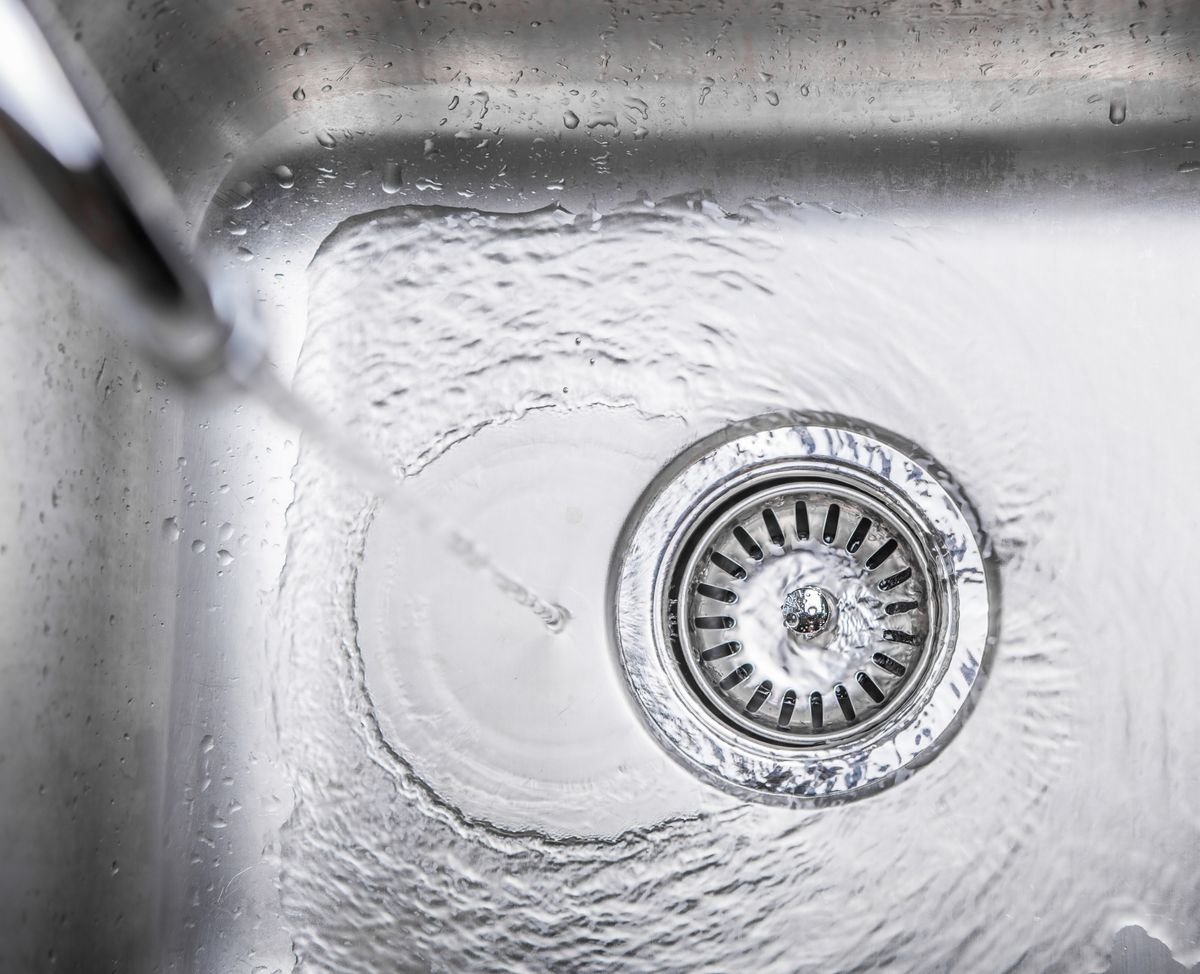A Weird Water Behavior That Intrigued Da Vinci Finally Has an Explanation

In the 16th century, Leonardo da Vinci first described a fascinating phenomenon involving water that later became known as the hydraulic jump. And a mere five centuries later, scientists have finally explained why it happens.
This jump is not some obscure property that's only visible to scientists. You really just need to walk into your kitchen or hop into the shower to see it.
If you turn on a faucet, notice what happens as the water hits the surface of the sink. It creates a very thin, fast-flowing, circular layer of water surrounded by a thicker, concentric ring of turbulent water. A hydraulic jump refers to the point where the water rises up and forms the thicker layer. [Images: The World's Most Beautiful Equations]
Starting in 1819 with Italian mathematician Giorgio Bidone, many researchers have tried to explain what causes water to jump in this way. But all of the explanations and equations to date have leaned on gravity as the major force, said lead author Rajesh K. Bhagat, a doctoral candidate in the department of chemical engineering and biotechnology at the University of Cambridge in England.
However, Bhagat and his team recently found that gravity scarcely has anything to do with these hydraulic jumps. Rather, the major forces behind them are surface tension and viscosity, they reported in their study, which was published online July 31 in the Journal of Fluid Mechanics.
To rule out gravity, Bhagat and his team performed a simple experiment. They hit a flat, horizontal surface with a jet of water to create a simple hydraulic jump — the same kind you would see if you turned on water at the kitchen sink. But then, they tilted this surface in various ways: vertically, at a 45-degree angle and horizontally — so that at the last, the jet of water would be hitting a surface that became a ceiling. To capture the initial jump, they recorded what happened with high-speed cameras.
In every case, the hydraulic jump happened at the same point. In other words, the thin, fast-moving inner layer was the same size no matter which orientation the plane was in. If gravity had caused the jumps, the water would have been "distorted," in any of the planes besides the horizontal one, Bhagat said. "This simple experiment proves it's anything but gravity."
Sign up for the Live Science daily newsletter now
Get the world’s most fascinating discoveries delivered straight to your inbox.
The new theory isn't down with gravity
To study the other forces that might have been at play, the researchers varied the water stream viscosity — a measure of how much it can resist flow — by mixing it with glycerol, a type of alcohol with a surface tension that's similar to water's, but that's 1,000 times more viscous than water's.
They also kept the viscosity constant and reduced the surface tension — the attractive force that holds liquid molecules together at the surface — by mixing in a common ingredient in detergent called sodium dodecyl benzene sulfonate (SDBS). Finally, they varied both the viscosity and surface tension by mixing water and propanol, another kind of alcohol, so that the solution was 25 percent more viscous than pure water but had a surface tension three times weaker.
This allowed the researchers to isolate the influence of each force, senior author Ian Wilson, a professor of soft solids and surfaces, also at the University of Cambridge, told Live Science.
The point is to be "able to predict where this transition between a thin film and a thick film starts," Wilson said. A lot of the previous theories couldn't do that, because the location of the hydraulic jump changes once the thick layer hits some sort of edge, like the edge of the sink.
The jump occurs at the spot where the forces from surface tension and viscosity add up and balance out the momentum from the liquid jet, the authors found.
Knowing where this jump first occurs could have applications in industry, Wilson said. The thin layer that forms before the jump carries much more force than the thicker layer does, thus making the thinner area more efficient at transferring heat.
High-speed jets of water are used in industrial applications, such as cleaning in milk processing and the cooling of aircraft turbine blades or silicon semiconductors , Bhagat said. Often in these applications, intermittent jets of water are more efficient, Wilson said. To improve the efficiency of these intermittent jets, you need to be able to predict where the initial hydraulic jumps happen, he said.
Originally published on Live Science.

Yasemin is a staff writer at Live Science, covering health, neuroscience and biology. Her work has appeared in Scientific American, Science and the San Jose Mercury News. She has a bachelor's degree in biomedical engineering from the University of Connecticut and a graduate certificate in science communication from the University of California, Santa Cruz.











